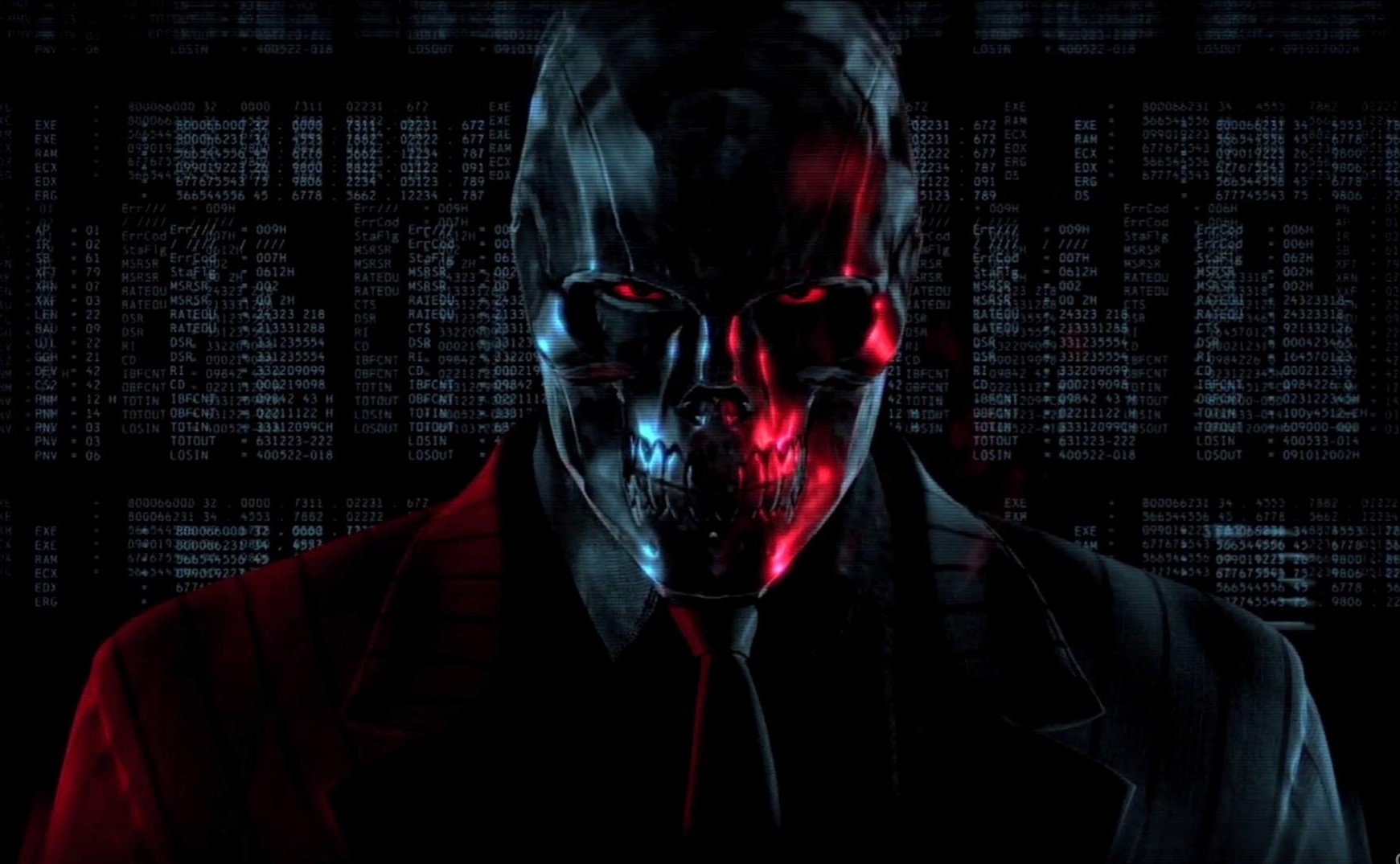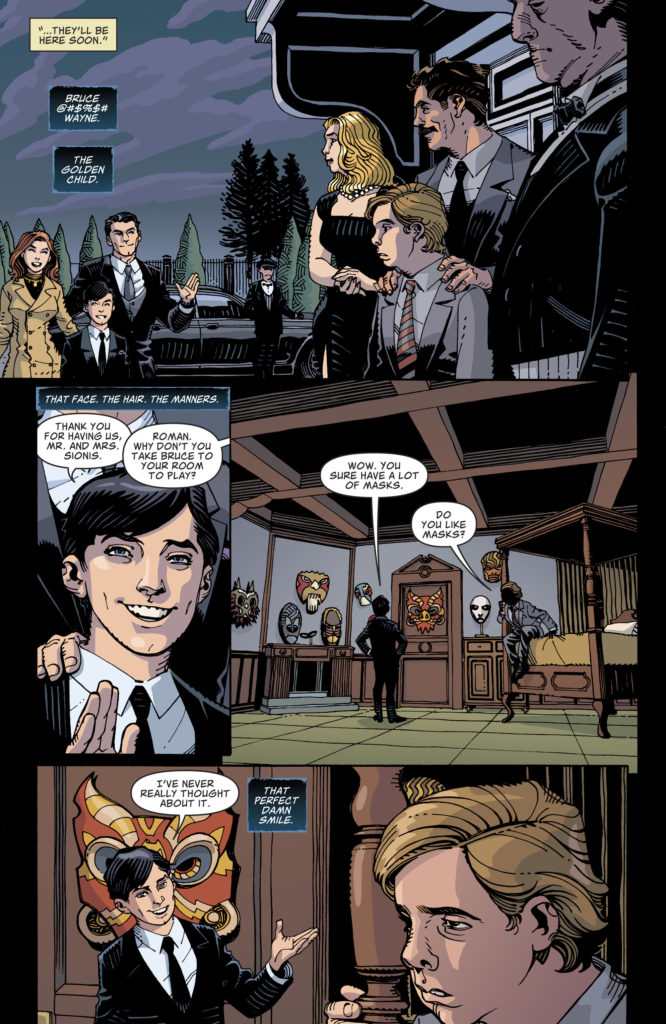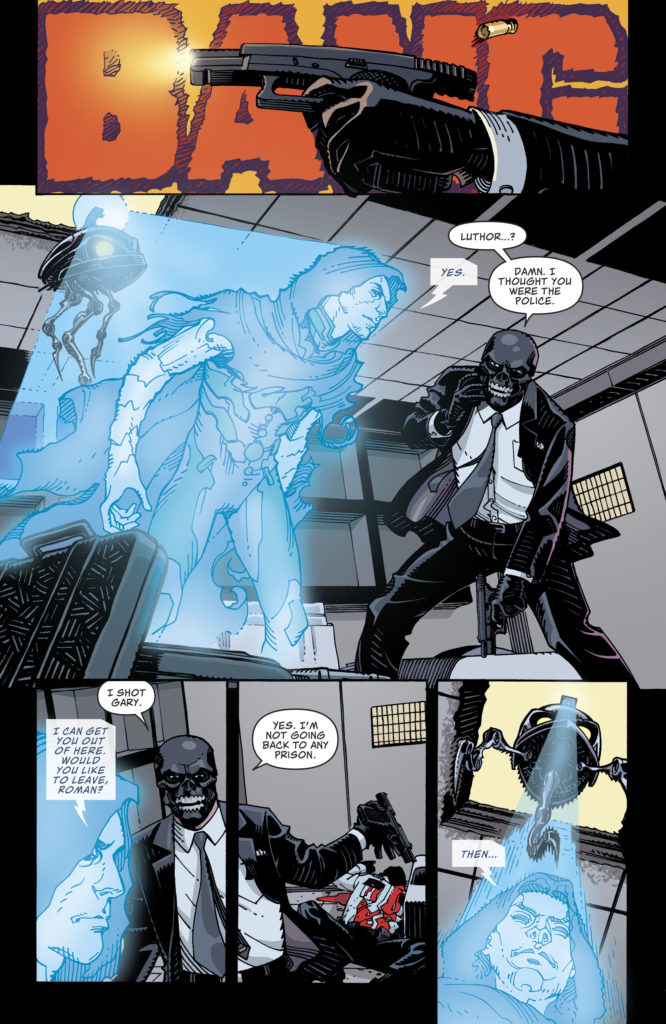
@nayrdrof
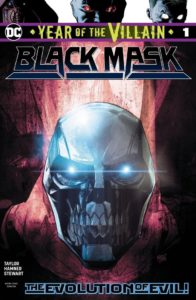
With the summer drawing to a close and school rapidly approaching for many, let us practice analogies to get the brain firing on all cylinders. Don’t worry, it’s multiple choice. Jim Carrey is to Roman Sionis as Masks are to: A) deals with the Devil, B) Power, either super or not, C) highly questionable fashion choices, or D) All of the Above. The answer is D) All of the Above. While Roman Sionis did not sell his soul for a film career, he did take a bargain from Lex Luthor, which is basically the same thing.
A seemingly dead Luthor has been dishing out enhancements to a handful of villains across the DC Universe and Black Mask is no exception. Before we get to that point, however, let us commence where everything started — the beginning. Providing a bit of gratuitous exposition during a hostage situation, Black Mask explains how he gained his nom de guerre. Half born from a bad home life, half derived from a hatred of Bruce Wayne, and half simply because he’s nuts, a young Roman Sionis burned his parents alive and carved his signature mask from his father’s coffin.
After explaining this to Force Ghost Lex, Luthor gives Black Mask the ability to change his face. How and why remain to be seen, yet there are a few clues dropped along the way. First off, the late Mr. and Mrs. Sionis were the faces of Janus Cosmetics. The Janus company has had several iterations throughout the years and is normally associated with Two-Face, however, another “face” has come from tainted cosmetics — one made of clay. Lot of faces in this issue.
Another face that makes an appearance is Katie Kane aka Batwoman. Along with Detective Montoya, the two fearsome females attempt to uncover why so many criminals are working for a large conglomerate now under the control of Roman Sionis. Side note, there is a police officer present in a few frames that could be a nod to Ethan Bennett, Clayface from the animated series “The Batman”, but that is pure speculation. What is certain, however, is that this is an excellent read.
Writer Tom Taylor effectively and efficiently incorporates multiple histories and storylines with only a few lines of dialogue here and there, allotting sufficient time to what is necessary for the meat and potatoes of the piece. The only criticism from this side would be that a few of the personal interactions felt overacted, despite the necessity of driving the plot forward. It is a fascinating choreography pairing violent action with cerebral introspection in a dance sure to earn high marks from the judges.
Speaking of perfect scores, the artwork by Cully Hammer and colors by Dave Stewart are on-point. Highlighting a few scenes in particular, the frames from the funeral as well as the hostage reveal stand out amongst the crowd. It is in these pages that the reader can feel the power of 50 Shades of Black. There is a vibrance within that darkness that sets the tone visually, playing harmoniously off the melody that is the written word. Long story short, read and enjoy. 4.75/5 Bibles.
-Ryan Ford
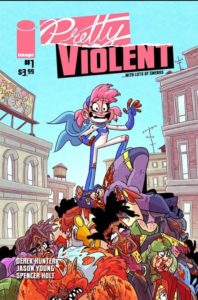

@eggrollko
Pretty Violent is a truly strange comic, in that it does something that I’d previously considered impossible. It’s clearly a pastiche of other work in both writing and art, and while it falls short in quality of the work it’s reminding me of it still manages to be entertaining on its own. It’s clearly meant to invite comparisons to I Hate Fairyland by Skottie Young and falls well short of that comic in virtually every way.
Derek Hunter‘s art seems, shockingly, even more cartoony than Young’s and while I prefer Young’s work for the most part, drawing the over-the-top violence in that style creates some funny gore gags. The story itself is simple enough as it’s really just a hyper violent version of a new teen superhero screwing up excessively their first time out. On the whole, Pretty Violent feels like it’s part I Hate Fairyland, part Spider-man, part Runaways and while it’s not on the level of any of those yet, it’s still a fairly enjoyable read. 3/5 Violent Bibles.
-Kevin Palma
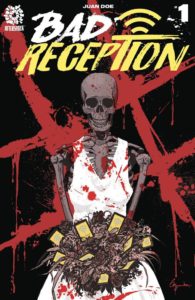

@LUKEPOISONER
A starlet lies murdered at her own wedding, a hashtag carved into her flesh, and there is no phone reception. Bad Reception #1, from AfterShock Press, is a cinematically woven tale of murder, celebrity, and social media obsession. Juan Doe (Legion of Monsters, American Monster) helms both the writing and art details for this; his first venture into solo storytelling. The art sets the tone neatly and cleanly, across double page after double page spread, giving his panels the feel of an expensive murder mystery tv series – and while this first issue gives the reader little in the way of clues, the plot is already steeped in intrigue.
Aftershock Press makes a fine addition to its stable of talent and creator-owned titles with Juan Doe’s Bad Reception, a dark and brooding mature title worthy of your dollars, and worlds away from the OTT fare of cape comics of late. 3.5/5 Bibles.
-Luke Anderson

